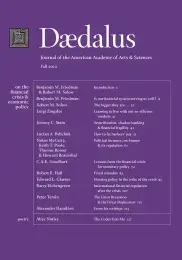The Great Recession & the Great Depression
In the depths of the Great Depression, John Maynard Keynes wrote that “[p]ractical men, who believe themselves to be quite exempt from any intellectual influence, are usually the slaves of some defunct economist.”1 This acute observation is applicable to our current Great Recession as well. In fact, the newly discredited ideas are not all that different from the old, suggesting that Keynes may have overestimated people’s ability to learn from their mistakes.
I pursue the parallels between these two watersheds in recent economic history along three paths: the causes of the crises and their relation to economic theory; the spread of the crises on a global scale; and, finally, recovery–at least as far as we can see it at this point. As Karl Marx famously said, history repeats itself “the first time as tragedy, the second as farce,”2 a criticism that also fits our current condition.
Both of these dramatic and costly economic crises emerged from the interaction of economic imbalances in the world economy and the ruling ideology of financial decision-makers who confronted these imbalances. World War I, a paroxysm of violence that brought the long economic expansion of the nineteenth century to a sudden end, produced the imbalance that led to the Depression. Britain, the workshop of the prewar world, was exhausted by the struggle. America, the rising economic behemoth, was unprepared to take responsibility for its new role in the international economy. Germany, having unsuccessfully challenged the Allied Powers, refused to acknowledge its defeat.
Patterns in the international movement of capital reveal this imbalance. During the postwar decade, one of the most important reasons for approving resumed capital flows was the ruling economic theory of the gold standard. In the eighteenth century, philosopher, historian, and economist David Hume explained how currencies valued in gold remain stable relative to each other. If, for instance, a shock to one country decreased its exports, the result would be an outflow of gold, which would lower prices in the exporting country. Lower prices would encourage exports and decrease imports, leading to an inflow of gold. Prices would rise again, re-creating the previous equilibrium. This argument is known among economists as the price-specie-flow mechanism.
. . .
